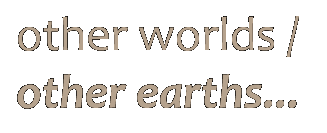Curriculum Outline

Below is a brief overview of what you'll do and what you'll learn in this pilot project. You can also download the student and teacher guides.
Introduction: Your Place in the Universe
| What you'll do... | What you'll learn or review... | |
|---|---|---|
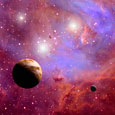 |
Begin by reviewing your "cosmic address"—Earth's place in the solar system, Milky Way Galaxy, and Universe. Discuss your ideas about the search for extraterrestrial life on other worlds with your classmates. | What's the difference between a star and a planet? Between a solar system and a galaxy? |
Part One: Detect an Alien World and Find Out What It's Like
| What you'll do... | What you'll learn or review... | |
|---|---|---|
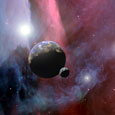 |
Activity 1.1: Use the telescope to take images of an "alien" solar system. You'll choose a star and galaxy to investigate. Then you'll control the telescope, take images, retrieve them the next day, and process your images to bring out more detail. Downloads for this activity: |
What's the size and scale of stars, planets, and galaxies? How are digital images captured, stored, and displayed? |
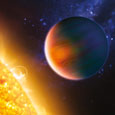 |
Activity 1.2: Modeling a transit. Use physical models and computer-based models to predict: How will the observed brightness of your star change as a planet orbits in front of it? How will the size and orbit of the planet affect your observations? Download for this activity: |
Models help us predict what we might observe... and interpret what we do observe. Models capture only some of the features of reality. Planets orbit around stars. Solid objects cast shadows. |
 |
Activity 1.3: Making the measurements. Detect an "alien" planet, using the telescope images you took and image-processing software. Measure and plot the brightness of your star over time. Can you detect signs of another world? Download for this activity: |
How to gather and assess data. How to create and interpret a simple graph. How to use "controls." How to recognize and minimize sources of error. How the brightness of light can be measured. |
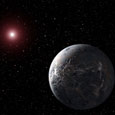 |
Activity 1.4: Create a first portrait of your planet. Analyze your results to figure out the size of the planet you've detected; the nature of its orbit; its distance from its star; and the planet's distance from Earth. Interpret and reflect on the meaning of your findings. Publish your results online. Download for this activity: |
The area of an object is proportional to the square of its dimensions. A light source appears dim in proportion to the square of its distance. The closer a planet to its star, the faster it orbits. Scientists confirm each other's work. |
Part Two: Looking for a Habitable Planet... and Life
Use your understanding of science—and your imagination—to envision planets not yet discovered. You'll learn how to decode the faint signals of light from another world—signals that would tell us that life has company in the universe.
| What you'll do... | What you'll learn or review... | |
|---|---|---|
 |
Activity 2.1: Mystery Signal 1: Transit Graph Interpret a transit graph, in order to estimate your mystery planet's size and orbit and predict if the planet might harbor life. |
|
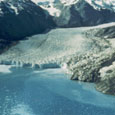 |
Activity 2.2: Searching for oceans, ice, and land. Decoding the light reflected from a planet. Does your mystery planet have oceans and continents? Use computer models to explore how the light reflected from a planet can tell us about its surface features. Download for this activity: |
What are some sources of light? How does light travel from source to detector? The composition of a substance determines how it interacts with light. Bright objects such as snow and ice reflect more light than rocks and soil. |
 |
Activity 2.3: Detecting plant life using infrared light. Explore wavelengths of light beyond what we can see, using cell-phone cameras and tv remotes. Examine infrared images of desert plants taken with the MicroObservatory telescopes. Use your findings to look for signs of (earthlike) plants in the infrared signal from your mystery world. Download for this activity: |
There are many more wavelengths of light than we can see with our own eyes. A spectrum is a graph of the brightness of light from an object, at different wavelengths. Plants reflect infrared light very strongly, producing a characteristic pattern in the spectrum of reflected light. |
 |
Activity 2.4: Taking a planet's temperature using infrared light. What is the climate like on your planet? Is there evidence of an atmosphere? Find out by using interactive models to decode the infrared light emitted from your mystery world. Download for this activity: |
All objects emit light in a range of wavelengths. The range is determined by the object's temperature. The spectrum of light emitted from an object can help us deduce the object's temperature. |
 |
Activity 2.5: Looking for an atmosphere and signs of life. What's the composition of your planet's atmosphere? Does it have water? Oxygen? Methane? Use interactive models to help decode the spectrum of light coming from your planet. Is your evidence consistent with life on this planet? Download for this activity: |
All substances absorb light at specific wavelengths, characteristic of that substance. A planet's atmosphere is affected by the presence or absence of life—and vice versa. |
Summing Up: What Have You Learned?
| What you'll do... | What you'll learn or review... | |
|---|---|---|
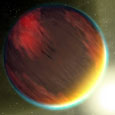 |
What might your planet look like? Synthesize what you have learned from the light curves of your mystery planet. Develop a portrait of what you think your planet might be like, and whether it might have life. Share your hypotheses and supporting evidence with classmates. |
Scientists develop conclusions that are consistent with the available evidence. But imagination and creativity play an important role in their work—and help guide future research. |

